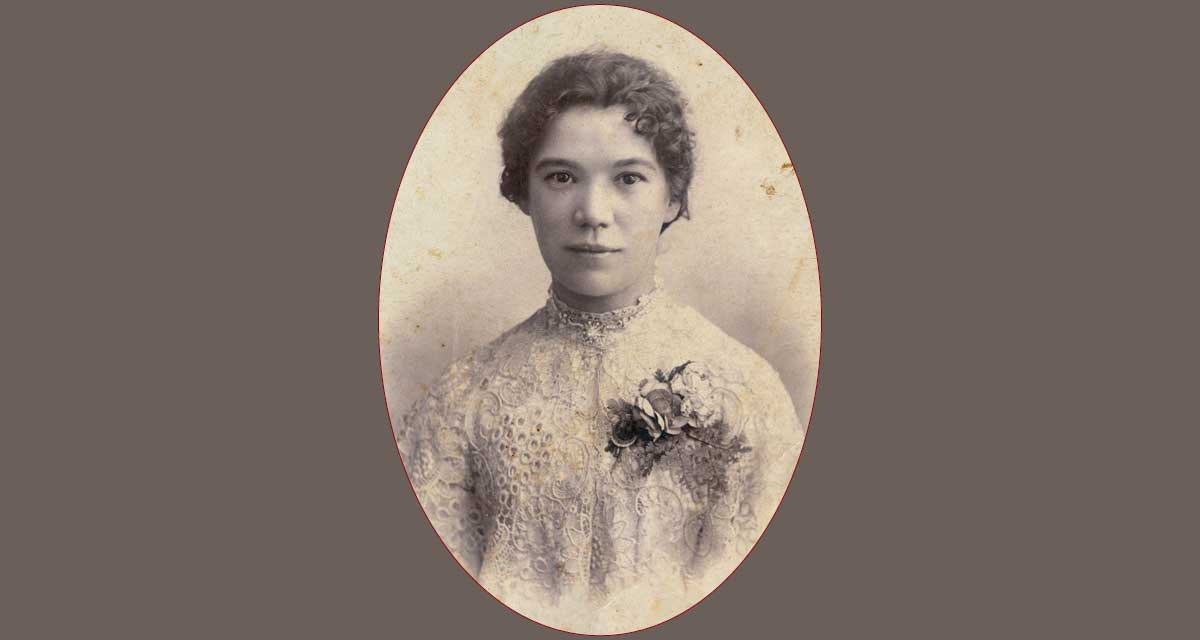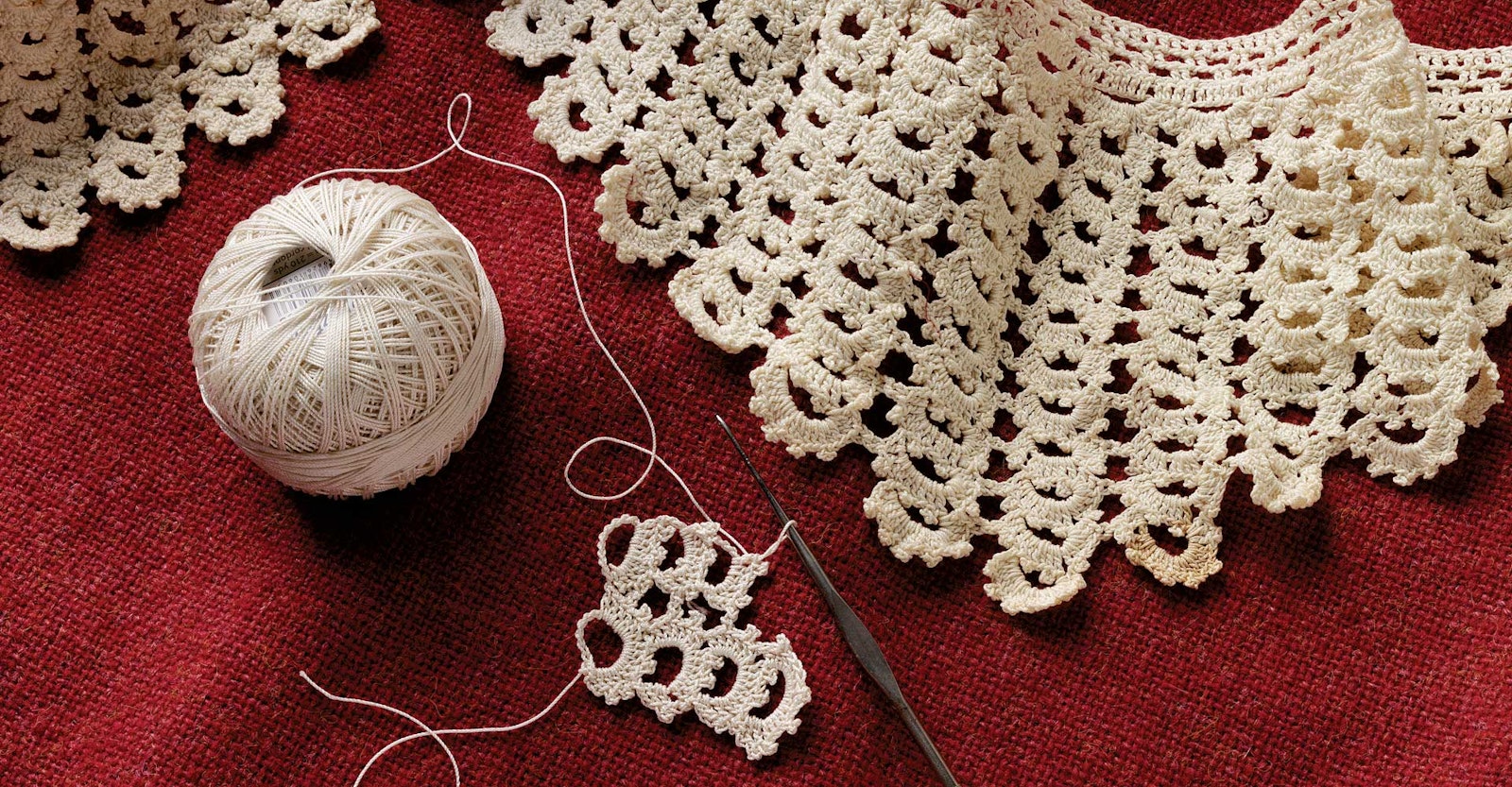My grandfather was born in 1875, the youngest of eleven children in a southern Welsh coal-mining town. His was a musical family; their home reverberated with piano, violin, cello, flute. When my grandfather came of age, he fell in love with a petite little charmer who sang, played cello, and acted in local theatrical performances. The mining industry in Wales was in tumult with labor strikes that sometimes became violent; my grandfather wanted a life with more promise and stability for himself and his sweetheart.

One of the original lengthy pieces of lace crocheted in Wales by Linda Ligon’s grandmother’s favorite sister. Linda Ligon’s great aunt standing at left and grandmother at right with a friend while performing in Pirates of Penzance. Circa 1905. Linda Ligon’s grandfather before he emigrated to America. Circa 1905. The lace measures about 75 inches (190 cm) long x 2 inches (5.1 cm) wide at the widest point. Collection of the author. Photo by Joe Coca
So they married; he bought a horse, set out for the eastern coast of England, traded the horse for a violin, and set sail for America. She followed once he had found employment in the coal mines of West Virginia. They had a son. The coal mines in America were beginning to be plagued with labor unrest, even violence. My grandfather saw a new opportunity in the oil fields of the Indian Nation in what is now Oklahoma. That’s where my mother was born—in a tiny frontier town on the border of the Osage Nation. And that’s where her mother died.
But let’s back up. One of my grandmother’s brothers came to America as well. He was younger, a hothead, deeply engaged in the International Workers of the World (Wobblies) labor movement. He came to their little home in Oklahoma, sick with diphtheria. My grandmother nursed him to health. He left. She succumbed. My mother was only two years old, but she remembered it all her long life. Months later, the brother returned, not knowing of the sorrow he had left behind. When he heard that his sister had died, he fled in grief, and was last heard of blowing up railroad bridges in New Mexico.
Fast-forward to my mother’s later childhood years. Her father had done his best, but often had to leave his children in orphanages or foster care while he worked as a supervisor in distant oil fields. This was a rough, lawless time and place for a proper little Welshman to be raising children. So he sent for a cousin, an old maid, to come be his wife and give his children a cultured upbringing. What a disaster. The new stepmother began by burning all the possessions of the first wife—and making the children watch. She was bitter, she hated the “wild West,” and she knew she was not loved.
But where does the lace come in? The stepmother brought it with her, a handmade gift from my late grandmother’s favorite sister (for whom my mother was named) to her new sister-in-law. Crocheted lace, trim for sturdy petticoats. Lace that would soil easily as she strode down the boardwalk of the little town as a cattle drive would come down the main street or the marshal would have his nose shot off by a desperado. (These are true stories my mother told me.)

Linda Ligon’s great aunt in Wales who crocheted pieces of lace trim as gifts for the second wife of her brother who had emigrated to America. Circa 1912. Collection of the author.
Some few years later, the stepmother died of cancer. This was a relief to my mother and her brother, who had suffered under her strict and rigid rules of propriety. Little remains of her years in America—a gravestone, a silver-backed hairbrush, two pieces of handmade lace.
The sister who made the lace, meanwhile, lived in southern Wales to a fine ripe age. She never married, but was greatly beloved by her large and far-flung family, including my mother, her namesake, with whom she kept up a lively correspondence. The lace itself has lived in trunks, boxes, and drawers for almost a century. It serves no useful purpose but to stand in mute testimony to scattered lives. And maybe that is use enough.
—Linda Ligon
This article was originally published in the November/December 2012 issue of PieceWork.

